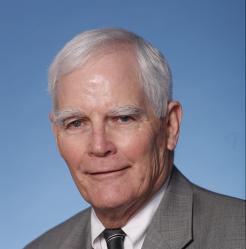The number of children in foster care has risen for the fifth consecutive year, reaching nearly 443,000 children in 2017, in part due to child welfare agencies’ response to the rising incidence of parents’ opioid addiction. Given this increase in caseload, coupled with the fact that between 30 to 50 percent of foster families step down each year, there is a growing need to prioritize effective recruitment and retention for foster parents, including relative (or kinship) foster parents.
That’s why, earlier this year, the CHAMPS campaign[1] and the Brookings Institution’s Center on Children and Families hosted a national convening to help states deliver better outcomes for children through improved foster parent recruitment and retention. The convening helped to shape the development of a foster parent recruitment and retention guide “A CHAMPS Guide on Foster Parent Recruitment and Retention: Strategies for Developing a Comprehensive Program,” which is available as a strategic planning and implementation tool for state and tribal child welfare agencies.[2]
The convening brought together 80 public and private child welfare agency staff, foster parents, former foster youth, issue experts, policy makers, advocates, and philanthropic leaders to share information about innovative solutions and best practices, including many examples from Quality Parenting Initiative sites.[3] Presentations focused on best practices for addressing common challenges, including the need to better train and support families caring for children, especially teens, strategies for involving parents and youth as valued partners, building a culture that prioritizes relationships and parenting, and the game-changing benefits of using data to shape foster parent recruitment and retention efforts.
“Support from the agency kept us going in the game of caring for teens.” Hue Osbourne, foster parent from New York
Throughout the convening, there was lively discussion of “key drivers” of better outcomes for children. These key drivers, also featured in the new CHAMPS guide, demonstrate how foster parent recruitment programs and policies are most effective when they are:
- Child-centered;
- Data-driven and informed by continuous quality improvement;
- Governed by multi-level agency leadership;
- Collaborative and transparent within the agency and with families and community;
- Reflective of youth and parent voice; and
- Sustainable.
Keynote remarks at the convening were delivered[4] by Jerry Milner, Associate Commissioner at the U.S. Children’s Bureau and the Acting Commissioner for the HHS Administration on Children, Youth and Families. In speaking about foster parents, Milner acknowledged the important role that foster parents play as a support system for a whole family – not only for the child, but for the child’s birth parents as well. He emphasized what we know from child development research, which is that parent-child relationships are essential to healthy child development.
“These children come into our homes as strangers and they leave as family.” Darlene Bell, foster parent, Minnesota
We are grateful for the leadership and innovation being driven by so many of the convening’s participants from 20 states and tribes across the county: California, Louisiana, Ohio, Oklahoma, Florida, Missouri, Wisconsin, Washington, Massachusetts, Minnesota, Nebraska, New York, Nevada, Georgia, North Carolina, Pennsylvania, Illinois, Vermont, Maine and the Confederated Tribes of the Umatilla Indian Reservation.
It’s our hope that the strategies shared at the convening and highlighted in the new guide will inform collaborative approaches to developing not just a plan, but a comprehensive approach aimed at achieving and sustaining excellence in foster parent recruitment and retention. We know that one of the most powerful ways we can help children in foster care is by ensuring safe and stable family-based care. We therefore urge state policy makers, program directors, and community leaders to commit to supporting excellent foster parents in their states and communities. Specifically, we ask that they consider ways to leverage the six key drivers for effective foster parent recruitment and retention.
5 FACTS ABOUT FOSTER CARE
-
The number of children in foster care has increased for five consecutive years.[5] This past year, 39 states experienced an increase in the rate of children and young people in foster care.[6]
-
Over one-third of children entering foster care do so at least in part as a result of parental substance abuse.[7] Of the states with the highest rates of opioid overdose deaths in 2016 (West Virginia, New Hampshire, Ohio, the District of Columbia, Maryland, and Massachusetts), all but the District of Columbia had increases in foster care rates. West Virginia had both the highest opioid overdose death rates and foster care rates.[8]
-
The high turnover of foster parents contributes to reported foster parent shortages. Estimates show that between 30 and 50 percent of families quit foster parenting within the first year.[9] These families often say their reason for leaving is that they don’t feel supported or respected as decision makers in the child’s life.[10] The large number of parents leaving foster care makes it more difficult to recruit and train the number of foster parents needed just to hold steady each year.
-
Several governors have already elevated foster parenting as a top priority. In their State of the State addresses earlier this year, Governor Kristi Noem of South Dakota spoke eloquently about the need for foster parents in her state and how every child deserved a family to love them. Governor Laura Brown from Kansas emphasized the “emergency” of needing to fix foster care and meet the demand associated with a 45 percent increase of the numbers of kids in foster care in Kansas since 2011.
-
In February, the National Governor’s Association held a session on child welfare at its annual winter meeting in Washington, D.C. and a main focus was on foster parenting issues. Governor Matt Bevan of Kentucky and Louisiana’s First Lady Donna Edwards spoke to colleagues about their states’ initiatives to strengthen and support foster parents.
[1] CHAMPS promotes foster parenting policy improvements in states and nationally. More information about CHAMPS is available at www.fosteringchamps.org.
[2] As a condition of federal funding, these agencies must submit a five-year plan on foster and adoptive family recruitment no later than June 30, 2019.
[3] The Quality Parenting Initiative (QPI) was developed by San Francisco-based Youth Law Center. QPI seeks to promote excellent parenting for all children in the child welfare system. Launched in 2008, the QPI approach has been adopted by over 75 state and local jurisdictions across 10 states. More information can be found at www.qpi4kids.org.
[4] Many of the theme and priorities Milner spoke about, including the importance of enlisting youths and parents as valued partners is highlighted in the March 2019 edition of the Children’s Bureau Express: “Spotlight on Integrating Youth and Parent Voices in Program Design, Planning, and Improvement” and retrieved here: https://cbexpress.acf.hhs.gov/index.cfm?event=website.viewHomepage&issueID=204
[6] https://www.childtrends.org/2017-the-number-of-children-in-foster-care-rose-in-39-states
[7] American Academy of Pediatrics Council on Foster Care, Adoption, and Kinship Care; Waite, Douglas; Greiner, Mary V.; and Laris, Zach (2018) “Putting Families First: How the Opioid Epidemic is Affecting Children and Families, and the Child Welfare Policy Options to Address It,” Journal of Applied Research on Children: Informing Policy for Children at Risk: Vol. 9 : Iss. 1 , Article 4. Available at: https://digitalcommons.library.tmc.edu/childrenatrisk/vol9/iss1/4
[8] Retrieved from https://www.childtrends.org/2017-the-number-of-children-in-foster-care-rose-in-39-states
[9] Office of the Assistant Secretary for Planning and Evaluation, U.S. Department of Health and Human Services. (2005). Understanding foster parenting: Using administrative data to explore retention. Retrieved from: https://aspe.hhs.gov/execsum/understanding-foster-parenting-using-administrative-data-explore-retention
[10] Retrieved from http://fosteringchamps.org/wp-content/uploads/2019/01/CHAMPS-Research-Highlights-for-Policy-Goals.pdf
The Brookings Institution is committed to quality, independence, and impact.
We are supported by a diverse array of funders. In line with our values and policies, each Brookings publication represents the sole views of its author(s).









Commentary
Keeping up with the caseload: How to recruit and retain foster parents
April 24, 2019